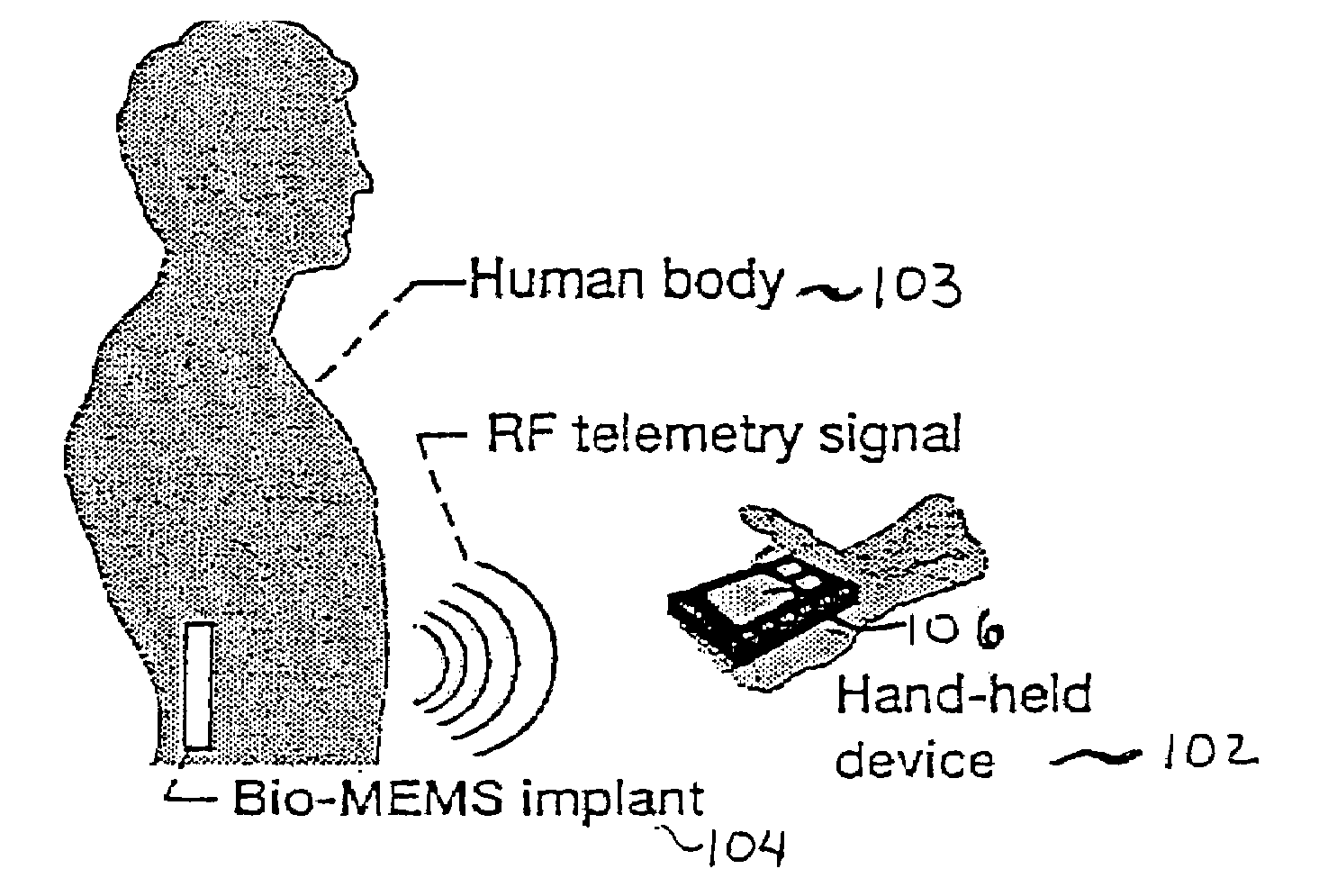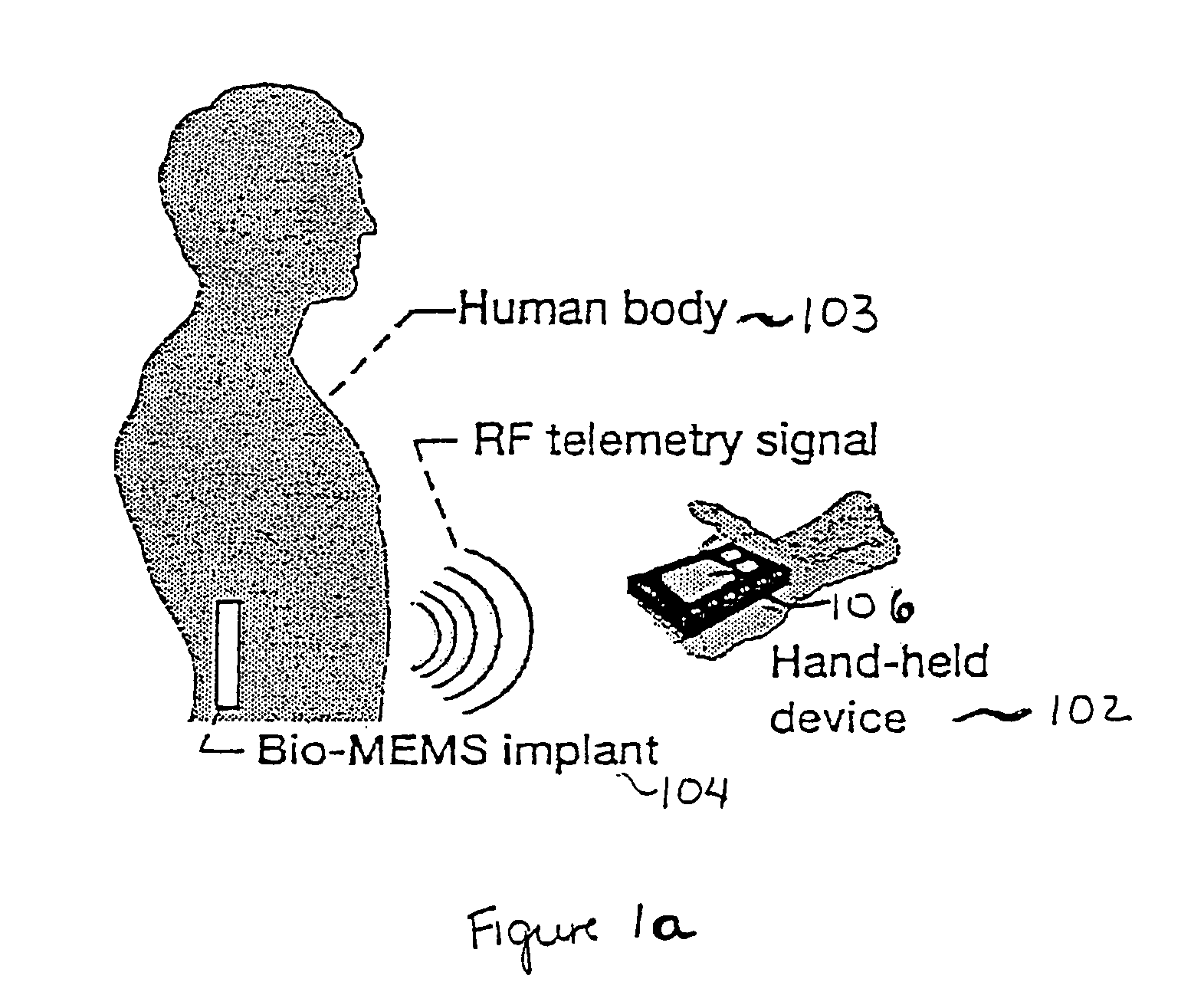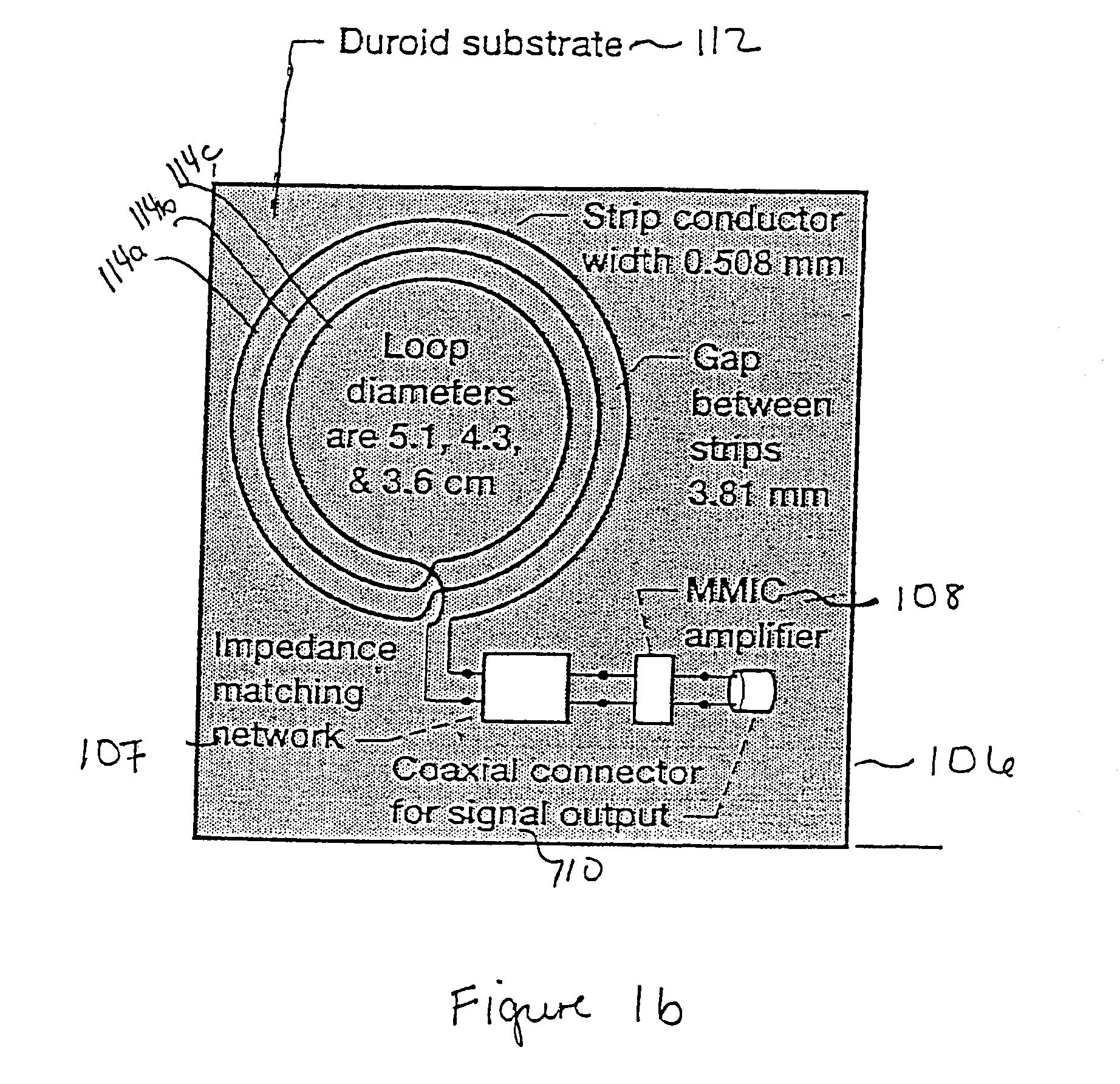Hand held device for wireless powering and interrogation of biomems sensors and actuators
a biomem sensor and actuator technology, applied in the field of telemetry based implantable sensing system, can solve the problems of shortening the life of the sensor, power dissipation in the biological tissue, and embedding the sensing circui
- Summary
- Abstract
- Description
- Claims
- Application Information
AI Technical Summary
Benefits of technology
Problems solved by technology
Method used
Image
Examples
Embodiment Construction
[0026]Reference will now be made in detail to the preferred embodiments of the present invention, examples of which are illustrated in the accompanying drawings. The present invention described below extends the functionality of a hand-held device for an implantable sensor. The hand-held device is a compact working system, having minimal impact on a human with an implanted biosensor, for powering the in-vivo biosensor and for obtaining data from the in-vivo sensor via telemetry, wherein the obtained data may be further analyzed and processed on an external system.
[0027]FIG. 1a illustrates a portable, palm-sized, hand-held device 102 for wireless powering, interrogation and data retrieval from at least one biosensor 104 imbedded in a human body 103 for medical diagnosis. Hand-held device 102 includes an antenna 106, which is further illustrated in FIG. 1b, for inductively powering implanted sensor 104 through a typical amount of body fluid and tissue. Antenna 106 is also used for rec...
PUM
 Login to View More
Login to View More Abstract
Description
Claims
Application Information
 Login to View More
Login to View More - R&D
- Intellectual Property
- Life Sciences
- Materials
- Tech Scout
- Unparalleled Data Quality
- Higher Quality Content
- 60% Fewer Hallucinations
Browse by: Latest US Patents, China's latest patents, Technical Efficacy Thesaurus, Application Domain, Technology Topic, Popular Technical Reports.
© 2025 PatSnap. All rights reserved.Legal|Privacy policy|Modern Slavery Act Transparency Statement|Sitemap|About US| Contact US: help@patsnap.com



